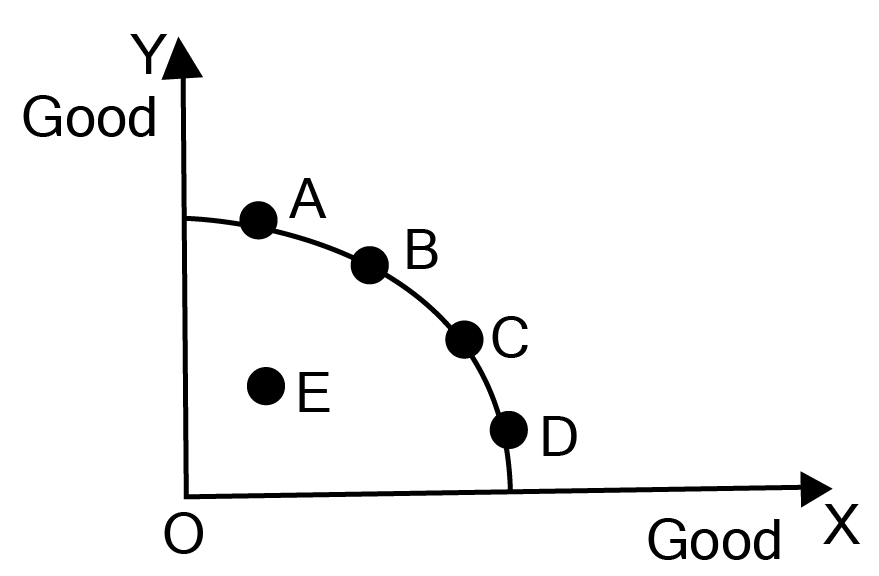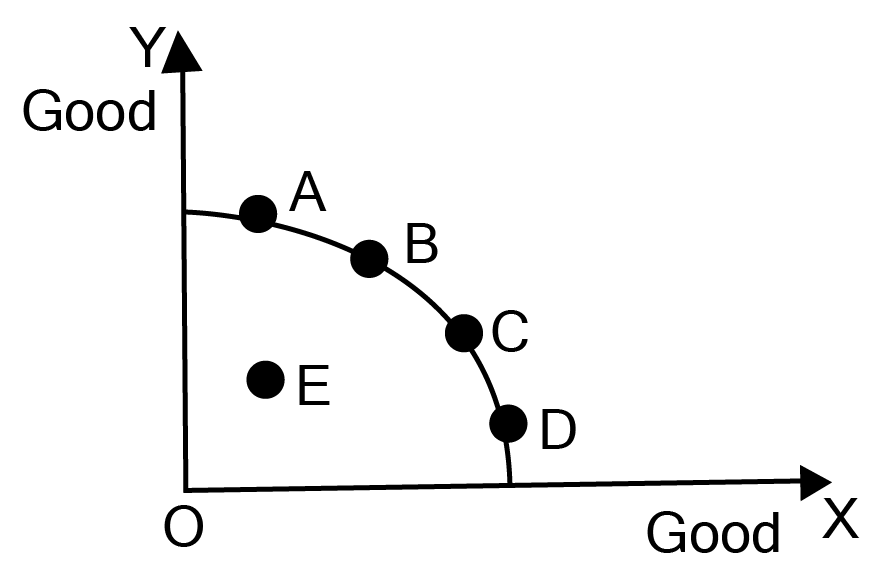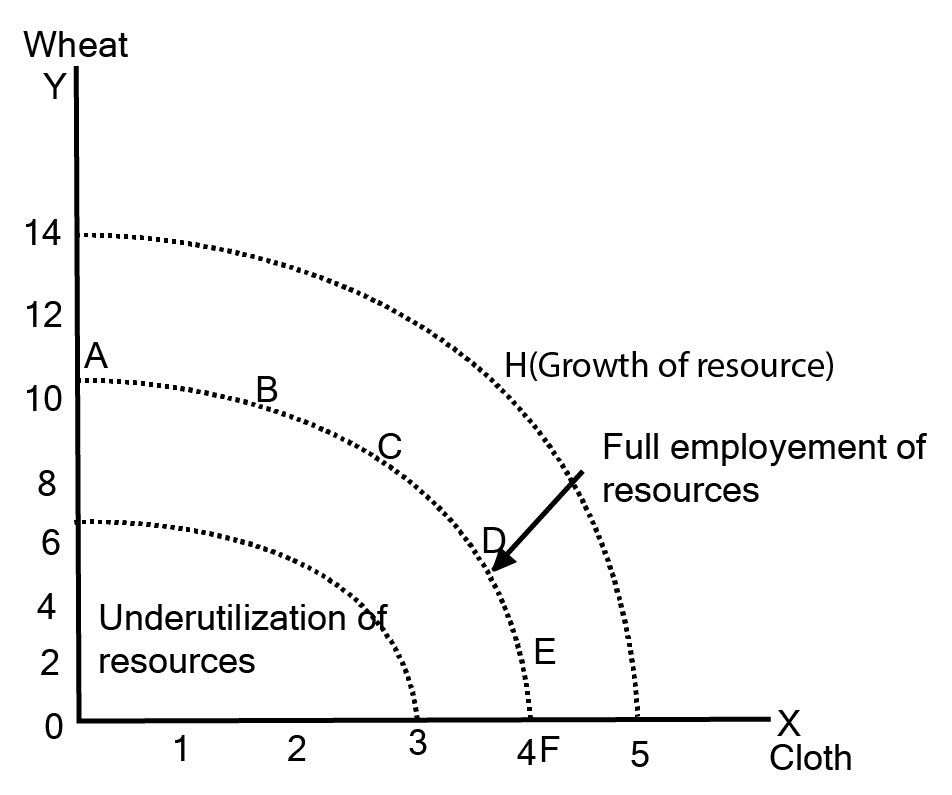CBSE Class 12 Micro Economics Chapter-1 Important Questions - Free PDF Download
Free PDF download of Important Questions with Answers for CBSE Class 12 Micro Economics Chapter 1 - Introduction to Micro Economics prepared by expert Economics teachers from latest edition of CBSE(NCERT) books. Register for Online tuition on Vedantu.com to score more marks in CBSE board examination.
 Table of Content
Table of ContentStudy Important Questions for Class 12 Economics (Introductory Microeconomics) Chapter 1 – Introduction
Multiple choice and Very Short Answer Questions (1 Mark)
1. Which of the following is a statement of normative nature in economics?
(a) Economics is the study of choices/alternatives.
(b) Government should be concerned with how to reduce unemployment
(c) According to an estimate, in spite of severe shortage, more than 10% of houses in Indian cities are lying vacant.
(d) Accommodation of Refugees is posing a big problem for the Europe
Ans: (a) Economics is the study of choices/alternatives.
2. Define scarcity.
Ans: Scarcity refers to a lack of resources in relation to their demand.
3. A growth of resources in an economy is shown on PPC by:
(a) Leftward Shift
(b) Unchanged PPC
(c) Rightward Shift
(d) None of the above
Ans: (c) Rightward Shift
4. Name the three central problems of an economy.
Ans: The three central problems are:
What should be produced?
How to produce?
For whom should the product be produced?
5. What is meant by economising of resources?
Ans: Economising of resources means making the best use of the existing resources.
6. Define Normative Economics with a suitable example.
Ans: Normative economics is a branch of economics that studies how an economy should function under ideal conditions. It focuses on the ‘what oughtt to be’ aspect. For example, subsidies should be provided to farmers etc.
7. Give two examples each of micro and macroeconomics.
Ans: Individual demand and supply are two instances of microeconomics. Whereas, examples of macroeconomics include aggregate demand and aggregate supply.
8. What does a point inside the PPC indicate?
Ans: A point inside the PPC (Production Possibility Curve) indicates resource underutilization.
9. Define marginal rate of transformation.
Ans: MRT (Marginal Rate of Transformation) is the ratio of units of one good that are sacrificed in order to create one more unit of another goods.
10. What is the opportunity cost?
Ans: It is the expense of foregoing the next best alternative.
11. The basic assumption regarding resources while drawing a PPC is
(a) Resources are unlimited
(b) Resources depend on the kind of goods produced
(c) Resources can be put to a particular use
(d) Resources are constant and given
Ans: (d) Resources are constant and given
12. What is the other name for opportunity cost in economics?
(a) Economic problem
(b) Marginal cost
(c) Total Cost
(d) Economic cost
Ans: (d) Economic cost
13. In a centrally planned economy, the central problems are solved by
(a) Supply of goods
(b) Demand for goods
(c) Market mechanism
(d) Planning authority
Ans: (d) Planning authority
14. In a market economy, the central problems are solved by
(a) Demand for goods
(b) Supply of goods
(c) Planning authority
(d) Market mechanism
Ans: (d) ) Market mechanism
15. The study of the jute industry is a macroeconomic study. This statement is
(a) Conditional
(b) True
(c) Can’t say
(d) False
Ans: (d) False
Short Answer Questions (3 or 4 Marks)
16. Does massive unemployment shift the PPC to the left?
Ans: Massive unemployment is caused by inefficient resource use, which does not reduce the economy's capacity to produce. As a result, there will be no shift in PPC. Due to resource underutilization, the economy will operate within the PPC.
17. From the following PP schedule calculate MRT of good x.
Production possibilities | A | B | C | D | E |
Production of good x units | 0 | 1 | 2 | 3 | 4 |
Production of good y units | 14 | 13 | 11 | 8 | 4 |
Ans: The MRT calculations are:
Production of good x units | Production of good y units | \[{\text{MRT = }}\dfrac{{{\text{ }}\Delta {\text{ y}}}}{{{\text{ }}\Delta {\text{ x}}}}\] |
0 | 14 | - |
1 | 13 | 1 : 1 |
2 | 11 | 2 : 1 |
3 | 8 | 3 : 1 |
4 | 4 | 4 : 1 |
18. What does the problem for whom to produce refer to?
Ans: The issue for whom to produce refers to the selection of the people who will ultimately consume the goods. Because resources are limited in every economy, no society can meet all of its citizens' desires.
As a result, a choice problem arises. The economic problem of "For Whom to Produce?" is essentially concerned with the distribution mix of the final goods and services produced.
The distribution of final goods and services is analogous to the distribution of national income (or national product) among production factors such as land, labor, capital, and entrepreneur
The issue can be divided into two categories:
Personal distribution: This refers to how an economy's national income is distributed among different groups of people.
Functional Distribution: This entails determining the proportion of various production factors in the country's total national product.
19. What is the opportunity cost? Explain with the help of a numerical example.
Ans: The gains that an individual, investor, or corporation foregoes while choosing one alternative over another are referred to as opportunity costs. The opportunity cost, also known as alternative cost in microeconomic theory, is the value (not a benefit) of the best alternative while making a decision.
Amrita, for example, has three employment offers from which to choose. Job A pays Rs. 60000, Job B pays Rs. 70000, and Job C pays Rs. 80000. If she took Job C, the opportunity cost would be Rs. 70000 per month.
20. Why is a Production Possibility Curve (PPC) concave? Explain.
Ans: Production Possibility Curve (PPC) is concave to the origin because each additional unit of good X necessitates the sacrifice of more and more units of good Y. In terms of the loss of production of good Y, the opportunity cost of producing each additional unit of good X tends to rise. This is due to the fact that production factors are not perfect substitutes for one another.

In the diagram, there are different combinations of good X and good Y, that is combination A,B,C and D which could be produced when the the resources in the economy are optimally and fully utilised. Any point on or below the production possibility frontier gives a combination of goods that could be produced given the resources and technology, however any combination under the PPC (Point E) signifies the underutilization or wasteful utilisation of resources.
Long Answer Questions (6 Marks)
21. What is the production possibility frontier?
Ans: Production possibility frontier:
The production possibility frontier is a curve that depicts all possible combinations of two goods that can be produced in a given economy with given resources and technology.
The production possibility frontier is also known as the transformation curve or the production possibility curve.
Due to scarce and finite resources, the production of a commodity could only be increased if there is a reduction in the other commodity. Hence, the PPC curve is concave.
Assumptions
The PP curve concept is founded on the following assumptions:
The economy's resource base is fixed.
The technology is pre-installed and unmodified.
The resources are effective and fully utilised.
In the production of all goods, all resources are not equally efficient.
Diagram:

In the diagram, there are different combinations of good X and good Y, that is combination A,B,C and D which could be produced when the the resources in the economy are optimally and fully utilised. Any point on or below the production possibility frontier gives a combination of goods that could be produced given the resources and technology, however any combination under the PPC (Point E) signifies the underutilization or wasteful utilisation of resources.
Shifts in Production Possibility Curve.
Reasons:
Changes in resources.
Changes in manufacturing technology for both goods.
Rightward shift:
Production Possibility Curve shift to the right indicates an increase in resources or technological advancement. Example skilled labour, technological advancements, and increased land productivity are all factors that are contributing to increased productivity.
Leftward shift:
Production Possibility Curve shift to the left indicates a decrease in resources or a deterioration in technology in the economy. Example unskilled labour, technological obsolescence, and decreased land productivity are all factors that are contributing to decreased productivity.
22. Draw a production possibility curve and mark the following situations.
a. Underutilization of resources
b. Full employment of resources
c. Growth of resources
Ans: Before the diagram, the explanations are:
a. Underutilization of resources : Underutilization of resources refers to a situation in which resources are used inefficiently during the production process. A point located below the production possibility curve indicates underutilization or inefficient resource utilization. The actual output is less than the potential output in this case. The examples of underutilization are shown below.
Labor illiteracy
Inefficient or partial utilization of resources such as machines
b. Full employment of resources:
Full employment refers to an economic situation in which all available labor resources are used as efficiently as possible. Full employment represents the maximum amount of skilled and unskilled labor that an economy can employ at any given time.
c. Growth of resources : Growth is defined as an increase in an economy's output over a period of time, with a minimum of two consecutive quarters.
The second definition of economic growth is an increase in what an economy can produce if all of its scarce resources are used. An increase in an economy's productive potential can be demonstrated by an outward shift in the production possibility frontier of the economy (PPF).
Production possibility curve depicting all the above situations:
It refers to a curve that depicts the many production possibilities that can be realized with the available resources and technology.
In the diagram given below:

Every point on the PP curve, such as ABCDEF, denotes full employment of resources and efficient resource usage.
Any point below or inside the PP curve, such as G, indicates underutilization of resources.
Any point above PP curves such as H shows growth of resources.
If the economy commits all of its resources to the production of commodity wheat, it can generate 14 units, but commodity cloth’s output will be zero. Commodity cloth and wheat may have a variety of production options. If we wish to increase the output of cloth , we must reduce the output of commodity wheat, and vice versa.
23. What is the difference between a planned economy and market economy?
Ans: The difference between a planned economy and market economy is as follows:
Characteristics | Planned Economy | Market Economy |
Definition | It is an economy in which the government has complete control over the market system. | It is a market system in which the pricing of goods and services is determined primarily by sellers and buyers, and is thus based on demand and supply. |
Government regulation | It is controlled by the government. | It is governed by producers and consumers, with little to no government regulation. |
Objective | It focuses on both social and macroeconomic goals. | Profit maximization is the goal of a free market economy. |
Consumer preferences | Consumer preferences are ignored in a planned economy because the government determines the item and amount of production. | Consumer preferences are taken into account. |
Innovation and economic development | It does not encourage innovation and development. | It encourages innovation and development. |
Business ethics | In a planned economy, the government has control over how business is conducted. As a result, unhealthy business practices and unemployment are reduced. | It fosters unhealthy competition, which leads to poor business ethics. As a result, unemployment and inequality increase. |
Resource distribution | Increases the distribution of resources, resulting in a smaller gap between the rich and the poor. | A free market economy has unequal resource distribution. As a result, there is a large disparity between the rich and the poor. |
24. Explain the central problem of the choice of products to be produced.
Ans: What to produce:
This problem involves two issues, mainly:
The choice regarding the choice of products.
The quantity of the chosen product.
Since there is a choice problem, the economy must decide which goods and services to produce, as the resources are limited and scarce in an economy, hence an optimum decision needs to be taken in respect to the choice as well the quantities of goods and services. The problem of choice mainly exists between consumer goods and capital goods.
For example, which consumer goods, such as wheat, rice, and cloth, and which capital goods, such as machines and tools, are to be produced.
When an economy decides what goods or services to produce, it must also decide on their quantity. Hence, it is not about choosing to produce either of the two, it is about deciding the quantity of each of them. If a decision is taken regarding more production of consumer goods, then it will have an impact on the quality of life of the current generation, whereas if capital goods are produced in more quantity, it will impact the production capacities of the future. Hence a decision needs to be made that takes into consideration both the present and the future generations.
Important Study Material Links for Class 12 Microeconomics Chapter 1
S. No | Important Study Material Links for Class 12 Microeconomics Chapter 1 |
1 | Class 12 Microeconomics Chapter 1 Introduction to Micro Economics Solutions |
2 | Class 12 Microeconomics Chapter 1 Introduction to Micro Economics Notes |
CBSE Class 12 Economics Important Questions Textbooks
S. No | CBSE Class 12 Economics Important Questions |
1 | Important Questions for CBSE Class 12 Introductory Microeconomics |
2 | Important Questions for CBSE Class 12 Introductory Macroeconomics |
Chapter-wise Links for Microeconomics Class 12 Questions
S. No | CBSE Class 12 Microeconomics Important Questions |
1. | |
2. | |
3. | Chapter 4 - The Theory of The Firm Under Perfect Competition Questions |
4. |
Related Study Materials Links for Class 12 Microeconomics
Along with this, students can also download additional study materials provided by Vedantu for Microeconomics Class 12–
S. No | Related Study Materials Links for Class 12 Microeconomics |
1. | |
2. | |
3. | |
4. | |
5. |

















